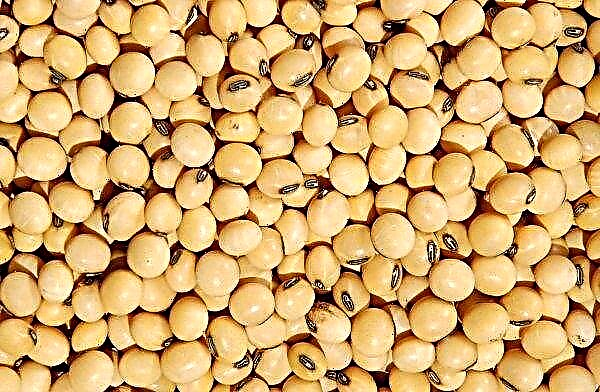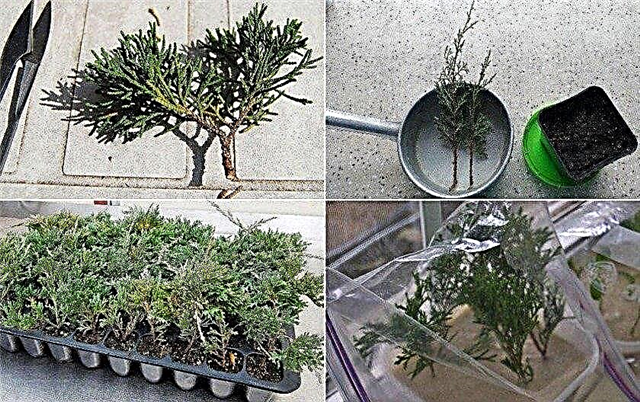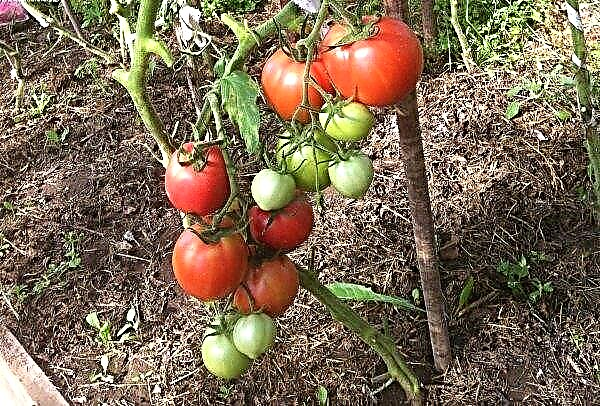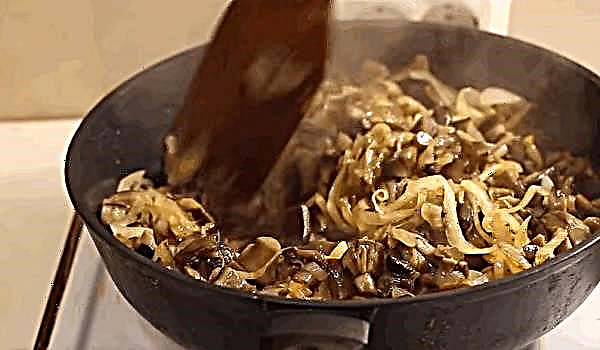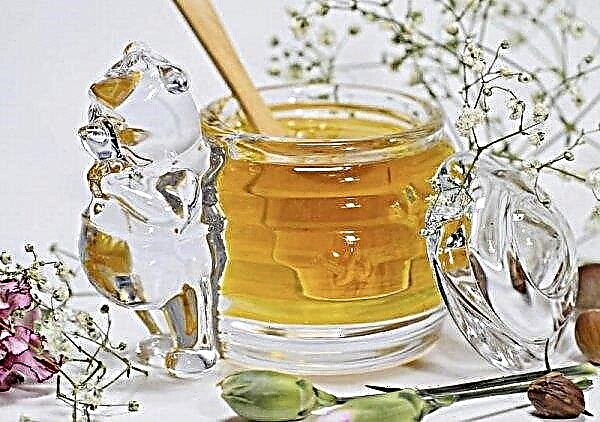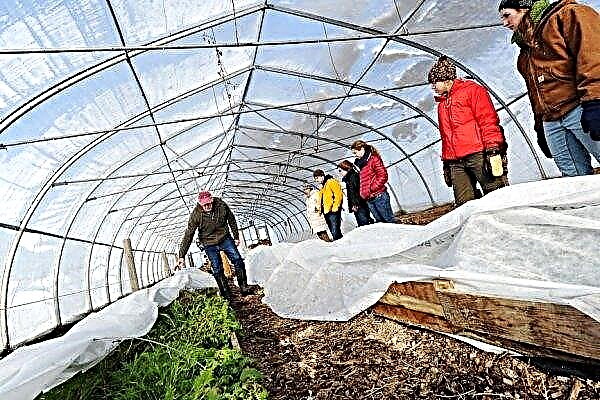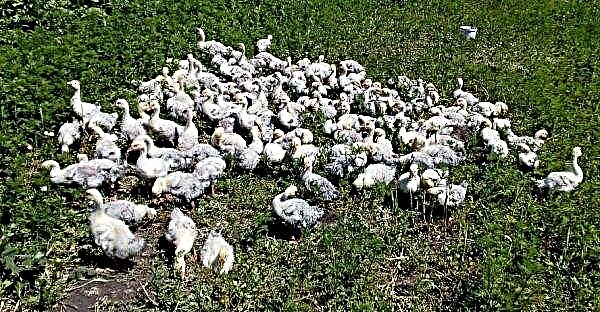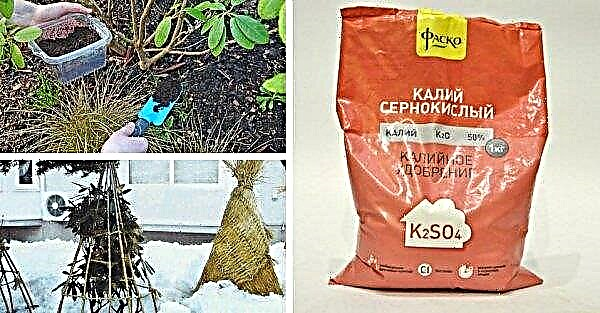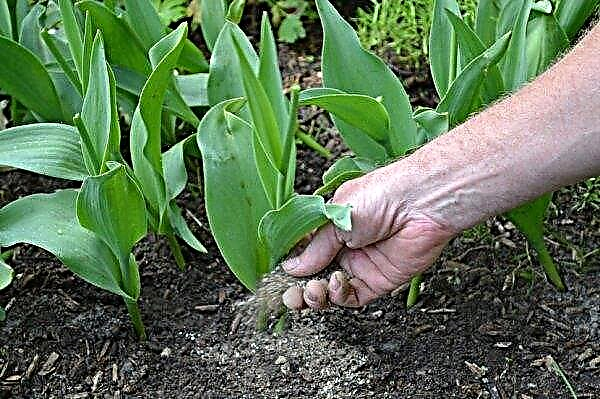Everyone knows how to breathe easily and freely in a pine forest, but few people know that such a sensation is caused by the amazing property of the needles of this tree - the ability to purify and ionize the air. It is interesting that young shoots of pine have long been used in folk medicine as a cure for many diseases. About the methods and features of this application - below in the review.
Botanical Description
Common pine (Latin name - Pinus silvestris), according to the generally accepted classification in botany, refers to trees of the first magnitude, that is, the highest and most powerful. The height of the pine can reach 40 m, and the trunk diameter is 1 m. The type of leaves is coniferous, the leaf plate has the shape of a long needle.

The botanical features of the tree are given in the table:
| Trunk | Tall and straight; the presence of bends indicates that the tree is damaged. |
| Bark | Thick at the base and thinner as it grows. The color is gray-brown, sometimes red-brown. The structure is heterogeneous, rough, grooved, covered with deep cracks, often exfoliating in whole layers, which serves as a kind of ventilation and at the same time performs a “fire” function in the forest. |
| Crown | In a young tree - in the form of an openwork cone, in an adult - rounded and expanding in the horizontal plane, in an aging - flat or umbrella-shaped. |
| Needles | Dense, long (40–70 mm), pointed at the ends, straight or slightly curved. Thickness - up to 2 mm. In section, flattened. The color is blue-blue, yellow before falling off. The location is paired (two pieces from one base). The needles change frequency is from 2 to 6 years. |
| Shoots | At a young age, green ones, as they grow older, the shoot acquires the same color as the trunk, but with a lighter shade. |
| Kidney | Oval or cone-shaped, yellow-brown, with a resinous coating. |
| Bumps | Bisexual. The male cone is small, not more than 1.2 cm, light color. Female - large, from 3 to 7.5 cm, regular cone-shaped, light brown or green, grow 1, less often 2-3 pieces from one base. The ripening period is December; disclosures are from late winter to mid spring. Seeds are winged, black. |
| Root system | The rod type, powerful, goes deep into the ground. |
 1 - a general view of a tree, 2 - a shortened shoot with two needles, 3 - a branch with female and male strobils, 4 - a female cone, consisting of macrostrobes, at the time of flowering, 5 - macrostrobil (a - seed scale with two ovules, b - hiding and seed scales), 6 - a branch with a wintering cone (a) and a formed cone (b), 7 - a mature ripe cone, 8 - a male spikelet consisting of macrostrobes, 9.10 - microsporophyllum, 11 - pollen, 12 - lignified seed and hiding scales with a thickened apex - shield (apophysis), 13 - lignified seed scales with 2 wings bubbled seeds, 14 - seed with a wing.
1 - a general view of a tree, 2 - a shortened shoot with two needles, 3 - a branch with female and male strobils, 4 - a female cone, consisting of macrostrobes, at the time of flowering, 5 - macrostrobil (a - seed scale with two ovules, b - hiding and seed scales), 6 - a branch with a wintering cone (a) and a formed cone (b), 7 - a mature ripe cone, 8 - a male spikelet consisting of macrostrobes, 9.10 - microsporophyllum, 11 - pollen, 12 - lignified seed and hiding scales with a thickened apex - shield (apophysis), 13 - lignified seed scales with 2 wings bubbled seeds, 14 - seed with a wing.
Healing properties
Pine - a tree is not only beautiful, but also very healthy. The most pronounced therapeutic effect is possessed by young pine shoots cut in early spring. It was during this period that the most valuable substances were concentrated in such biological material.
Did you know? The dense, closed crowns of closely growing, tall trees retain temperature and moisture well in the coniferous forest, therefore it is always warmer in it than outside.
So, in the chemical composition of annual pine branches there are:
- vitamins - A, C, K, P, as well as B12 and other water-soluble vitamins;
- minerals - iron, magnesium, calcium, nickel;
- alkaloids;
- flavonoids - campferol, toxifolin, myricin;
- essential oils containing terpenoids - cadinene, terpineol, karen, pinenes, bornyl acetate and borneol, natural flavors, etc .;
- tannins;
- organic acids (in resin) - abietic, dextropimaric, lepopimaric, oleic, palusturic.

All of these components in the complex are capable of exerting a general strengthening, cleansing, disinfecting, anti-inflammatory and wound healing effect on the body, but it is worthwhile to dwell on some of these therapeutic properties of pine.
Did you know? The oldest pine tree in the world has been growing, according to scientists, for more than 4000 years. It is interesting that the location of this centenarian is kept in strict confidence so that curious tourists do not harm the unique plant.
Choleretic
Flavonoids, which are rich in young shoots of pine, stimulate the liver, resulting in increased secretory function of this organ and, accordingly, increased synthesis of its main enzyme - bile. It is especially valuable at the same time that the choleretic effect when taking pine preparations does not manifest itself very strongly and, as a rule, cannot cause a negative effect.

- In traditional medicine, such funds, in particular, are used for:
- prevention of gallstone disease;
- treatment of biliary dyskinesia, hypomotor intestinal dyskinesia and other functional disorders of the digestive system;
- comprehensive patient support for various diseases of the liver and gall bladder, for example, cholangitis, non-calculous cholecystitis, impaired bile duct obstruction, etc .;
- relieve constipation;
- general body cleansing.

Anti-inflammatory
The anti-inflammatory effect is one of the most valuable and pronounced properties of pine shoots. It is achieved due to the fact that a blocking effect on the inflammation process (which is the body’s reaction to trauma, infection or other irritant) in the composition of pine has a number of components, namely:
- tannins - kill pathogenic microflora, increase blood coagulation (stop bleeding), promote tissue regeneration;
- flavonoids - have phytoncide effect, inhibit the development of bacteria, fungi and even some viruses;
- resin - is a natural antiseptic;
- essential oils and complex sugars (starch) - destroy pathogens, stop the inflammatory process;
- vitamin C - It has a powerful immunostimulating effect, thus mobilizing the internal reserves of the body, helping it to fight inflammation on its own.
 Especially useful anti-inflammatory properties of pine are considered for diseases of the respiratory system.
Especially useful anti-inflammatory properties of pine are considered for diseases of the respiratory system.
Painkillers
Pine shoots are also a natural analgesic, due to which decoctions, tinctures and other drugs based on such biological raw materials are widely used to relieve pain syndrome of a very different nature, in particular such types of pain as:
- muscle
- headache;
- Dental
- in joints, etc.

Contraindications
The main contraindication for taking drugs based on pine branches is individual intolerance - an allergic reaction can occur to one or more components that make up the raw material.
- In addition, flavonoids contained in pine can have a negative effect on the cardiovascular system, especially in people suffering from:
- high blood pressure (hypertension);
- increased heart rate (tachycardia);
- heart rhythm disturbance (arrhythmia);
- violation of the frequency and depth of breathing (shortness of breath);
- coronary heart disease (in particular, angina pectoris);
- heart failure;
- tendency to form blood clots;
- atherosclerosis and other diseases of a similar nature.

Pine is also contraindicated in acute problems with the kidneys and liver, in particular:
- pyelonephritis;
- glomerulonephritis;
- hepatitis of any type;
- cholestasis.
Skin diseases of an infectious nature are another reason to end up taking medications with pine shoots. Traditionally, pregnant women and nursing mothers should also refrain from alternative treatment, since reliable data on how it will affect the baby cannot be predicted in advance. In any case, alcohol-based preparations are expressly prohibited.Important! You can not take folk remedies containing potent biological raw materials during an exacerbation of ulcers, gastritis, pancreatitis and other diseases of the digestive system. In the remission stage, patients suffering from such ailments also need to be extremely careful with self-medication.

It should also be noted that even in the absence of contraindications, the recommended dosage of the drug should not be exceeded, since in this case undesirable side effects may occur - from burning in the stomach, rapid breathing and headache to more serious poisoning.
Important! It is precisely because of the pronounced phytoncidal properties of conifers that many sanatoriums, dispensaries and other health-improving institutions try to place directly in pine forests, and if this is impossible, plant pine trees abundantly in the surrounding area.
Recipes and uses
From the sprouts of pine at home, you can prepare a lot of healing potions - from traditional tinctures, infusions or decoctions to more original ones, such as honey or jam. Depending on the specific recipe, it is possible to use such a drug both inside and out - in the form of lotions, ointments, inhalations or a therapeutic bath.
Tincture
Under tincture in medicine, it is customary to understand a dosage form that is prepared without heating, by extracting useful substances from plant materials into a liquid (usually alcoholic) base due to the long connection of such raw materials and liquids (infusion), after which the plant component itself from the finished product is removed.
On vodka
To prepare tinctures on vodka you need:
- Finely chop the young branches along with the needles and fill them with any glass container with a tight-fitting lid (bottle or jar). When laying the raw materials do not tamp.
- Pour vodka to the top of the tank. The approximate ratio of raw materials and vodka is 100 g per 1 liter.
- Put the vessel in a dark place for two weeks, occasionally shaking gently.
- After some time, drain the liquid, discard the pine branches, put the tincture in the refrigerator.
 Pine shoot tincture is usually prepared with vodka or alcohol.
Pine shoot tincture is usually prepared with vodka or alcohol.The drug should be taken in 1 tbsp. l after meal. It is used as a means to cleanse blood vessels and strengthen immunity, as well as for treatment and prevention:
- urogenital tract inflammation;
- tonsillitis, pharyngitis, tracheitis and other acute diseases of the upper respiratory tract;
- tuberculosis;
- heart attacks and strokes;
- asthma
- rheumatism, radiculitis, joint problems;
- diseases of the gastrointestinal tract, liver and gall bladder;
- headache.

On alcohol
Alcohol tincture from pine shoots is prepared according to the same technology as vodka, but you need to take it in smaller doses - 20 drops at a time (about 2/3 tsp). After a two-week course, you should take a break.
In addition to indications common to all types of pine tinctures, the alcohol preparation is often used externally, in particular for grinding and disinfecting dressings for wounds. For joint diseases, it is preferable to use the external use of the drug.
Important! Do not use alcohol-containing preparations for rubbing children, since alcohol has the property of being absorbed into the body through the skin and into the blood. For the same reasons, rubbing with vinegar is strictly prohibited.
On the water
You can get medicinal raw materials from pine shoots by insisting on plain water; True, such a remedy is more correctly called not tincture, but infusion. The cooking technology remains the same, the only condition is that the water must be purified, but not boiled.
Ready-made infusion can be used to rinse the mouth, which helps to relieve toothache, strengthen gums and treat various inflammations - from stomatitis to tonsillitis. It is useful to drink 100 ml of the drug for a prolonged cough (pine has expectorant properties), as well as for all the diseases listed above in cases where alcohol is contraindicated for one reason or another (for example, children).
Did you know? Pine is a very common tree, but at the same time it grows exclusively in the Northern Hemisphere. It is interesting that among two hundred species of Pinus silvestris in Russia, 90 can be found, and the largest population in this country is not traditional Russian birch, but pine.
Decoction
Broth is a faster way to extract squeezed from medicinal plants, because it is carried out due to intense heating. Its disadvantage is that high temperatures destroy some useful components of raw materials. In particular, ascorbic acid, which is rich in pine shoots, can only be preserved to a small extent with this method of preparation. For this reason, it is recommended not to cook all coniferous decoctions, but to languish in a water bath.
Technology of cooking broth:
- Finely chop a young pine shoot along with needles.
- Pour 1 tbsp. prepared plant material 250 ml of cold water.
- Put the mixture in a water bath, cover.
- Stew for 30 minutes.
- Remove the container from the fire, allow to cool completely, without removing the lid.
- Strain the liquid, discard the pine branches.
Indications for use are:
- urogenital tract inflammation;
- tonsillitis, pharyngitis, tracheitis and other acute diseases of the upper respiratory tract;
- tuberculosis;
- heart attacks and strokes;
- asthma
- rheumatism, radiculitis, joint problems;
- diseases of the gastrointestinal tract, liver and gall bladder;
- headache.

Pine broth is drunk in 50 ml three times a day. You can also use a decoction of pine shoots for inhalation or warming baths, for example, to relieve an attack of radiculitis (in the latter case, salt is also useful to add to the water).
Honey
Pine does not belong to honey plants, and therefore bees do not show interest in this tree. And yet, from pine shoots you can make a thick syrup, which is not inferior to honey in consistency, taste and useful properties.
To do this, you must:
- Wash young branches, carefully clean from needles and chop.
- Place the raw materials in an enameled pan and pour cold water so that the liquid level covers the shoots for 1-2 cm. About 2 liters of water should fall into 2 cups of shoots.
- Leave the mixture for 4-5 hours in a warm place so that volatile compounds from the pine fall into the water.
- Put the pan on the fire, cover, cook for 20 minutes from the moment of boiling.
- Remove the container from the fire and leave the lid on for 24 hours.
- Strain the infusion. The liquid should acquire a pleasant greenish tint.
- Add sugar to the infusion in a ratio of 1: 1, mix thoroughly.
- Put the syrup on the fire and cook for 90 minutes until thickened.
 Pine honey is an excellent cure for diseases of the respiratory tract and gastrointestinal tract. You need to take it for 1 tbsp. three times a day 30 minutes before meals.
Pine honey is an excellent cure for diseases of the respiratory tract and gastrointestinal tract. You need to take it for 1 tbsp. three times a day 30 minutes before meals.
Jam
Pine shoot jam is prepared using approximately the same technology as honey. You can, for example, use the following recipe for this:
- Wash and cut the young branches as finely as possible. Needles can be removed, but some housewives use shoots along with needles.
- Mix in an enameled container an equal amount of chopped raw materials and hot water (for example, 1 cup).
- Cook the mixture over low heat until the liquid has boiled away by 50%.
- Remove the pan from the heat and, using a wooden rolling pin, carefully knead the softened shoots.To speed up the process, you can kill the mixture in a blender.
- After the contents of the pan have completely cooled, strain it through cheesecloth folded into several layers, then squeeze the remaining cake well.
- Return the expressed liquid to the pan, add sugar at the rate of 1 kg per 1 liter of broth, put on fire, bring to a boil.
- After the jam becomes thick, add a small amount of freshly squeezed lemon juice (about 2 tablespoons per 1 liter), mix thoroughly, remove from heat, allow to cool.
 Pine jam is not so much a treat as a medicine, so you need to take it in small quantities so as not to harm yourself. The recommended dose is 1 tbsp. at one time, the list of indications is standard.
Pine jam is not so much a treat as a medicine, so you need to take it in small quantities so as not to harm yourself. The recommended dose is 1 tbsp. at one time, the list of indications is standard.Pine branches are suitable not only for decorating a house before the New Year holidays, but also for more serious purposes. Such raw materials, if collected on time, properly prepared and correctly taken, can be used to prevent many diseases, and sometimes to treat them. However, one should always remember that medicine, even folk medicine, is still a science, and therefore, any medicine should be taken with maximum responsibility.

